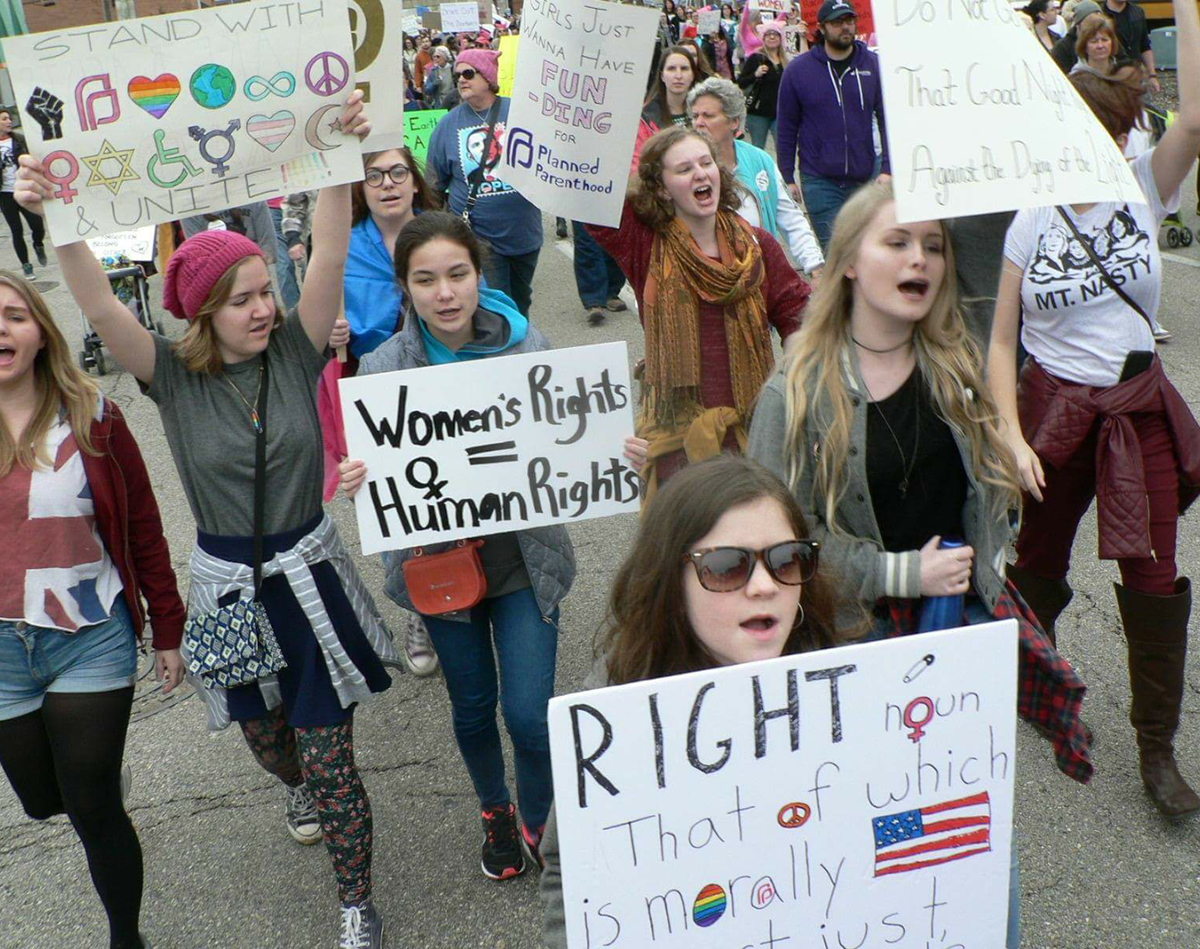This is What Democracy Looks Like
On January 21st, 2017 the world witnessed something truly historic–the largest protest in United States history.

An estimated 4.2 million people across the US marched in harmony with the Women’s March on Washington; sister marches took place in over 500 cities and drew–political scientists claim–1 out of every 100 Americans to march in support of women’s rights. If these statistics aren’t impressive enough, there were also marches on all 7 continents–yes, even Antarctica! This global phenomenon was intended to not only shine a spotlight on women’s issues, but to resist certain administrations that threaten to roll back hard-won policies of the past that still protect women today.
Myself and many members of the Talawanda Diversity Club were able to go to the Cincinnati sister march, and all of us have said that it was a truly life-changing experience. The air was electric. You could practically see the sparks of enthusiasm and excitement rising up from the crowd. Nearly 14,000 people gathered in Washington Park to exercise their constitutional right to freedom of speech and freedom to demonstrate–the message coming across loud and clear: “We are here, and we demand respect.”
Thousands of people flooded the streets of downtown, bringing traffic to a standstill. Chants began to echo through the fired-up mass of protesters: “Show me what democracy looks like! This is what democracy looks like!” The crowd represented the incredible diversity of American women: a ninety year old woman standing next to a little girl holding a scribbled sign, a hijabi woman standing next to an African American teen sporting an afro. It was at once a celebration of these women, and a desperate plea for their safety and recognition.
No matter what party you side with, it deserves to be recognised that this march was monumental and unprecedented in modern American democracy. Joining the countless marchers felt like stepping into a bygone era, and seemed more like the 1960s than the 2010s. Although the atmosphere felt dated, the goals certainly were not, and the march focused on some of the most pressing issues for women in America and around the globe: reproductive rights, equal pay for equal work, and freedom from harassment and assault.
The Women’s March was a beautifully unique experience, but looking back on it, one moment really sticks with me. At the beginning of the march when we had stopped traffic, a young man climbed on top of a stagnant white SUV holding a rather cryptic sign. Everyone was struggling to figure out what he was trying to accomplish, both fearing for his safety and trying to discern a clear message. Then, a woman came up to the car and handed him a baby girl, wearing tiny black converse and the smallest denim jacket I’ve ever seen. Suddenly, his sign became stunningly clear–it read:
“This is for the Future.”


